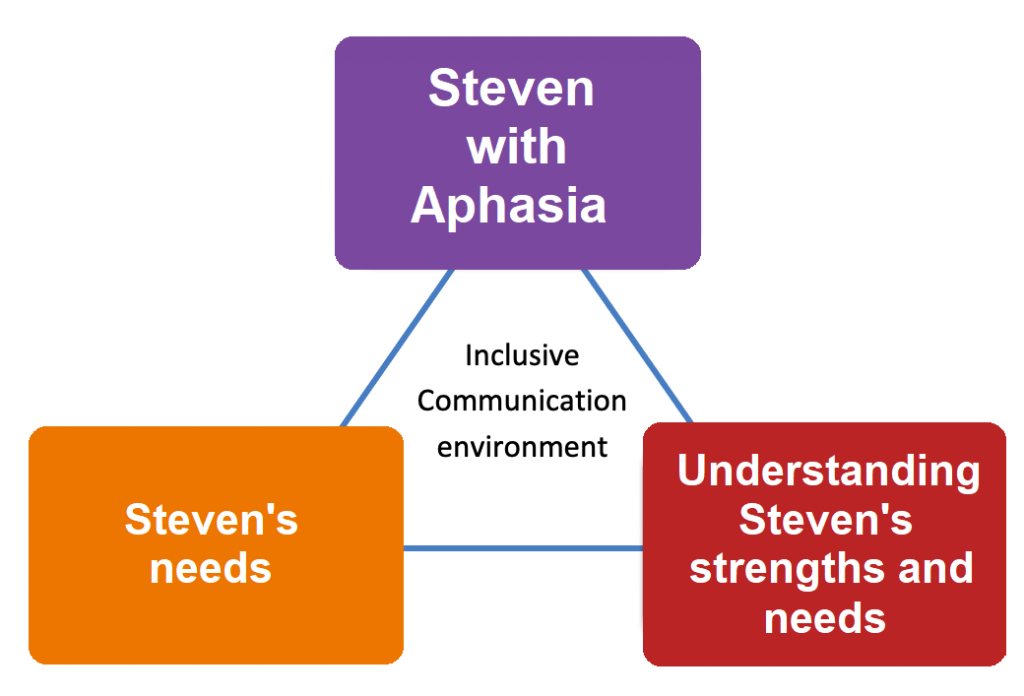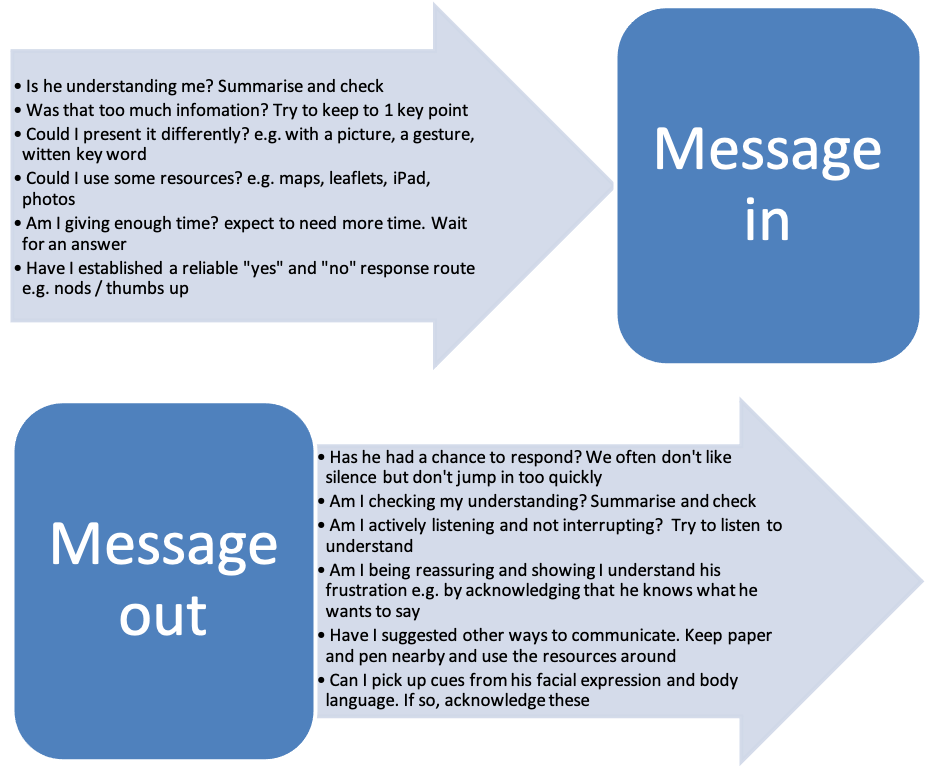Inclusive communication means sharing information in a way that helps everyone understand
For staff working in stroke services, it means recognising that people with communication difficulty understand and express themselves in different ways and therefore they need to find out what support is required and match the way they communicate to the ways the person will understand
Due to aphasia, Steven will need supported communication to express his thoughts and feelings and without this is at risk of being misjudged in terms of his cognition and capacity. Click on link to training video Aphasia- what a difference some help makes.
RCP National clinical guideline for stroke 2016 states: “The carers and family of a person with communication problems after stroke, and health and social care staff, should receive information and training from a speech and language therapist which should enable communication partners to optimise engagement in rehabilitation, and promote autonomy and social participation.”
The ward aims to be an inclusive communication environment for Steven.

To be an effective communication partner with Steven requires some problem solving and thinking about how to adapt to make communication easier.

Inclusive Communication environment diagram
- Person with communication support needs with recognised individual strengths and support needs
- Accessible resources tailored to individuals needs
- Communication partner with skills and knowledge on how to help; understanding the individual’s strengths and needs
Messages diagram
Message in
- Is he understanding me? Summarise and check
- Was that too much information? Try to keep to 1 key point
- Could I present it differently? e.g. with a picture, a gesture, written key word
- Could I use some resources? e.g. maps, leaflets, iPad, photos
- Am I giving enough time? expect to need more time. Wait for an answer
- Have I established a reliable “yes” and “no” response route e.g. nods / thumbs up
Message out
- Has he had a chance to respond? We often don’t like silence but don’t jump in too quickly
- Am I checking my understanding? Summarise and check
- Am I actively listening and not interrupting? Try to listen to understand
- Am I being reassuring and showing I understand his frustration e.g. by acknowledging that he knows what he wants to say
- Have I suggested other ways to communicate. Keep paper and pen nearby and use the resources around
- Can I pick up cues from his facial expression and body language. If so, acknowledge these
Page last reviewed: 19 Jan 2021


